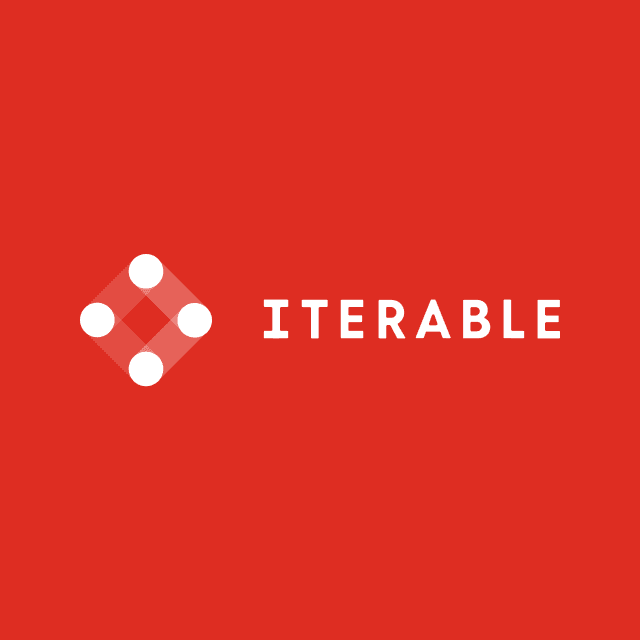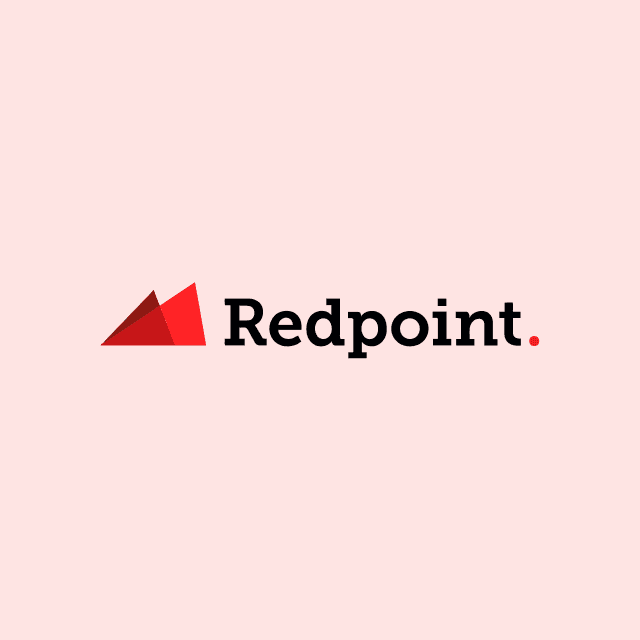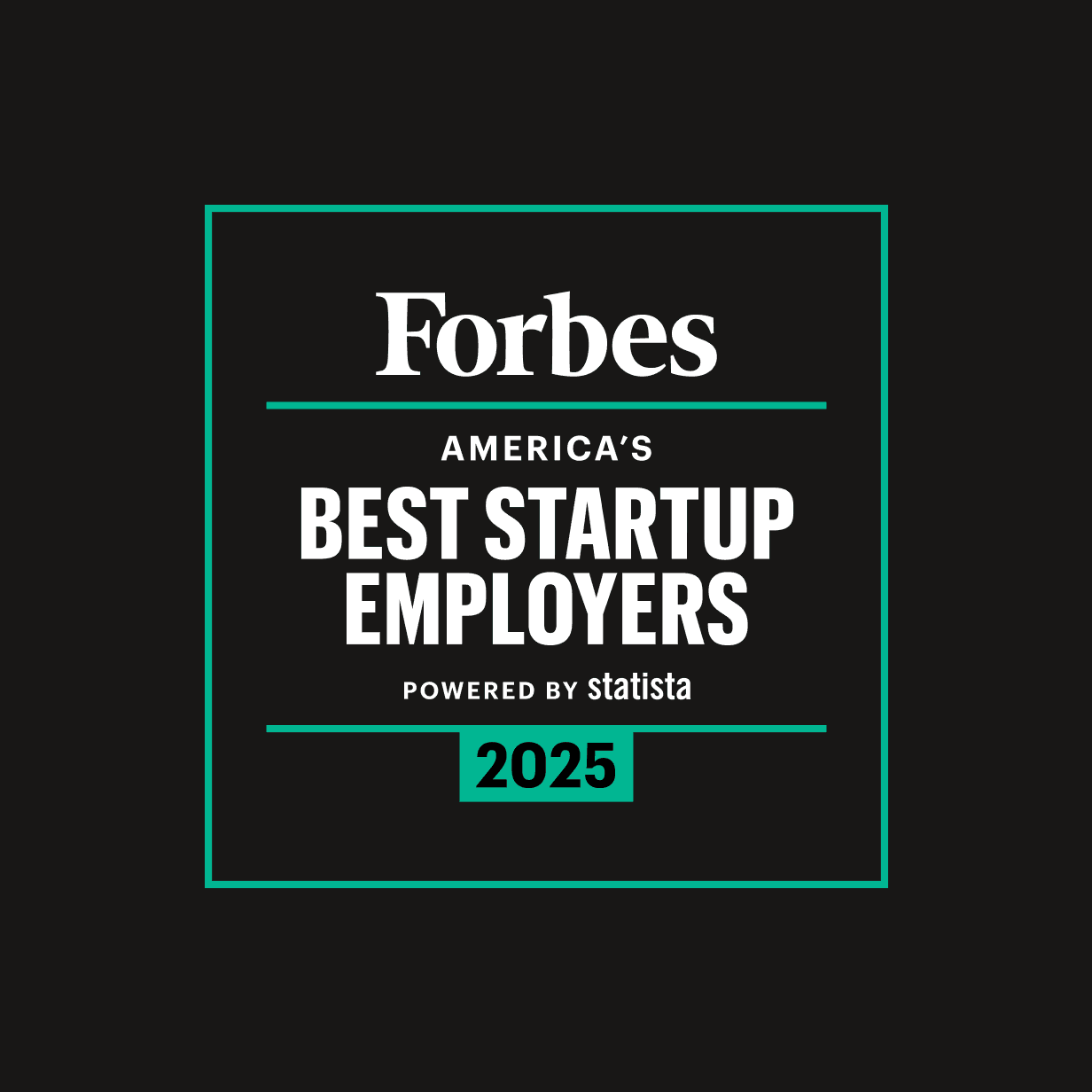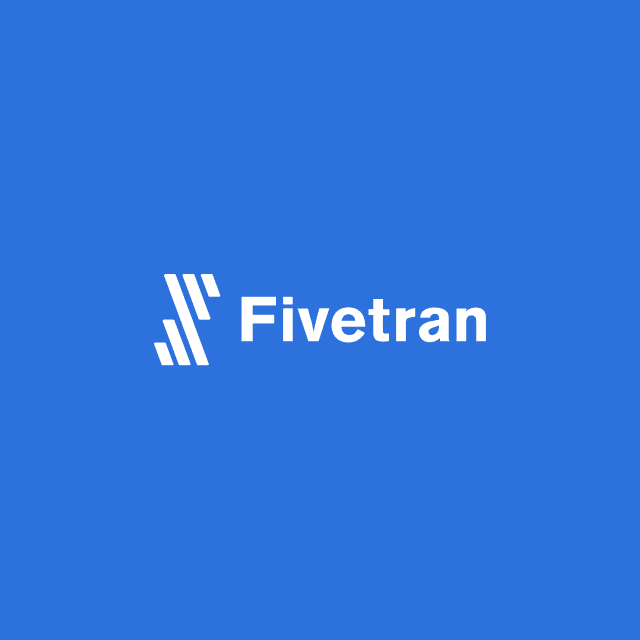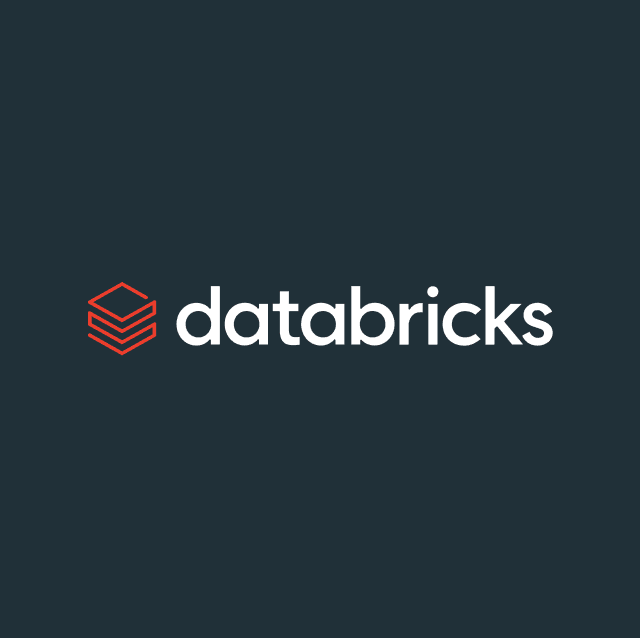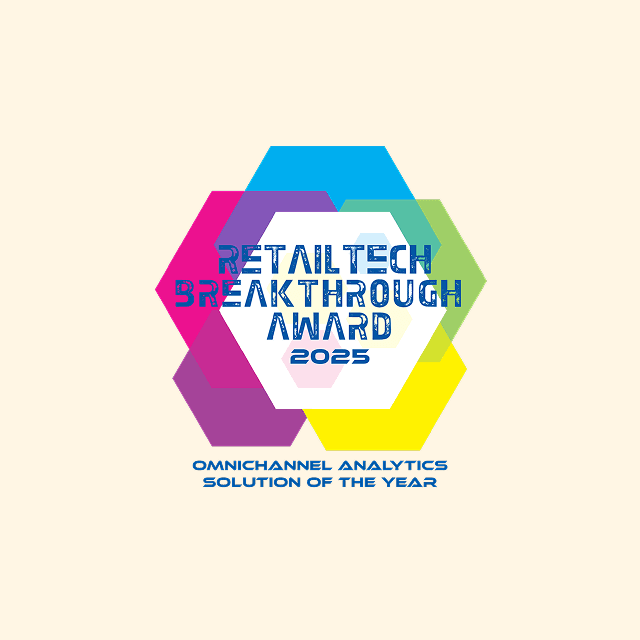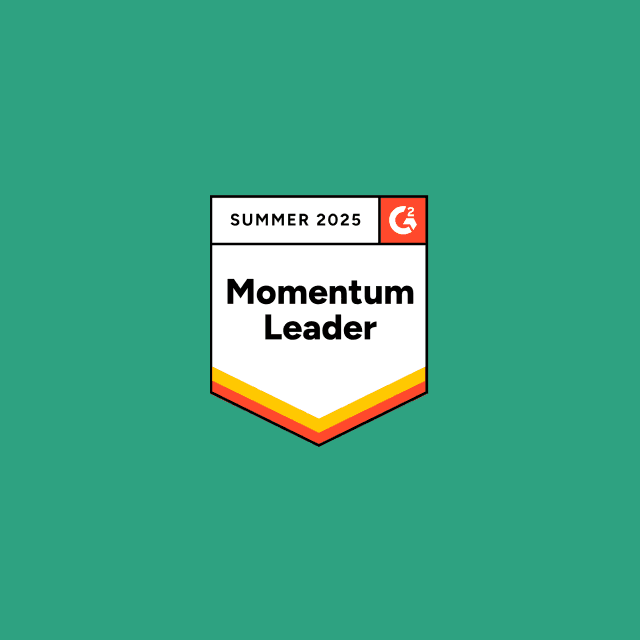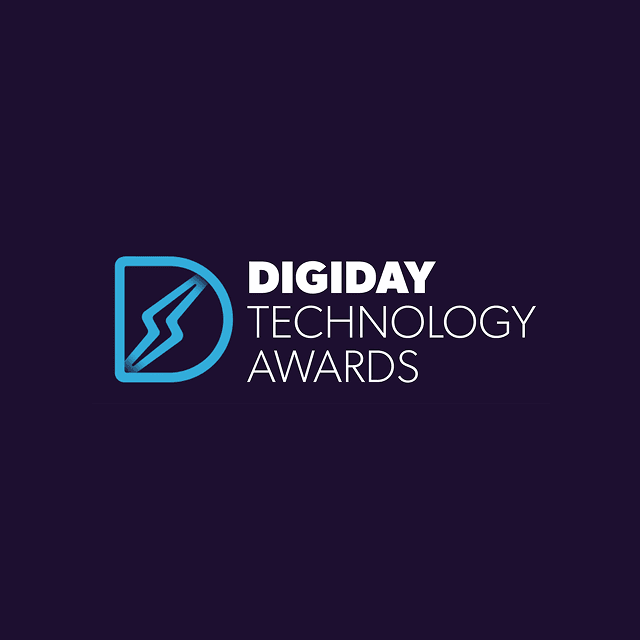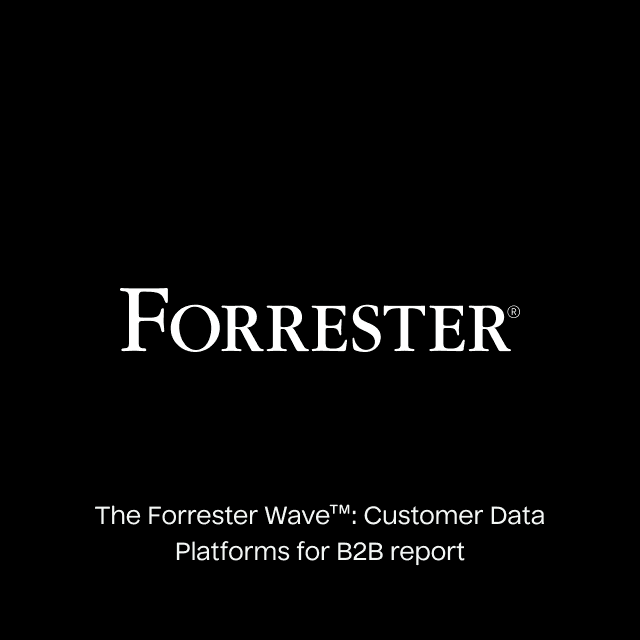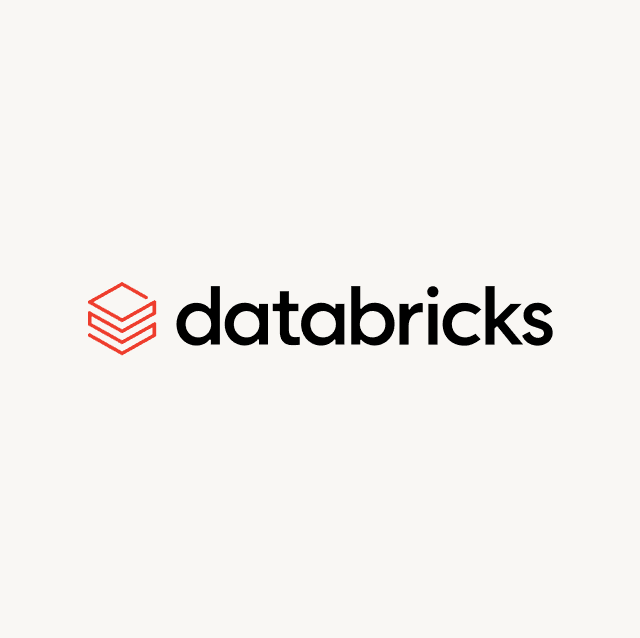Download our latest whitepaper: “Rewriting the Lifecycle Marketing Playbook with AI Decisioning” to learn how industry leaders are leveraging AI agents to drive core use cases like cross-sells, winbacks, and repeat purchases.
Margins in the Quick Service Restaurant (QSR) industry are tighter than ever. Food and labor costs continue to climb, and consumers are extremely value-conscious. To stay competitive, QSR brands are shifting away from reliance on paid acquisition channels and third-party delivery apps. Instead, they're doubling down on loyalty programs, mobile apps, and first-party channels like email and push to build direct customer relationships.
In fact, digital sales now make up 24% of all QSR sales, and 40% of QSR leaders believe first-party ordering will be their biggest revenue driver in 2025. As a result, many teams are exploring AI solutions to turn that data into personalized customer experiences across their owned channels and properties.
In this blog, we’ll explore how AI Decisioning platforms are transforming lifecycle marketing in QSR. You’ll learn how AI agents can now automate millions of customer experience decisions, unlocking true 1:1 personalization that drives strategic use cases like repeat purchases, cross-sells, and winbacks.
The QSR personalization ceiling
QSR marketers operate in one of the toughest categories out there. Switching costs are non-existent. Purchase windows are short. Consumers have endless choices, and brand loyalty can be gone in a second. Success in QSR comes down to your ability to drive incremental visits and orders to keep guests coming back every single week.
For years, lifecycle marketers have used the same playbook to drive this ongoing engagement: batch and blast campaigns, manually defined journeys, AB testing, and limited-time offers. These tactics seem to “work,” but each operates on a fundamental flaw, assuming that customer behavior is static and everyone within an audience behaves the same way.
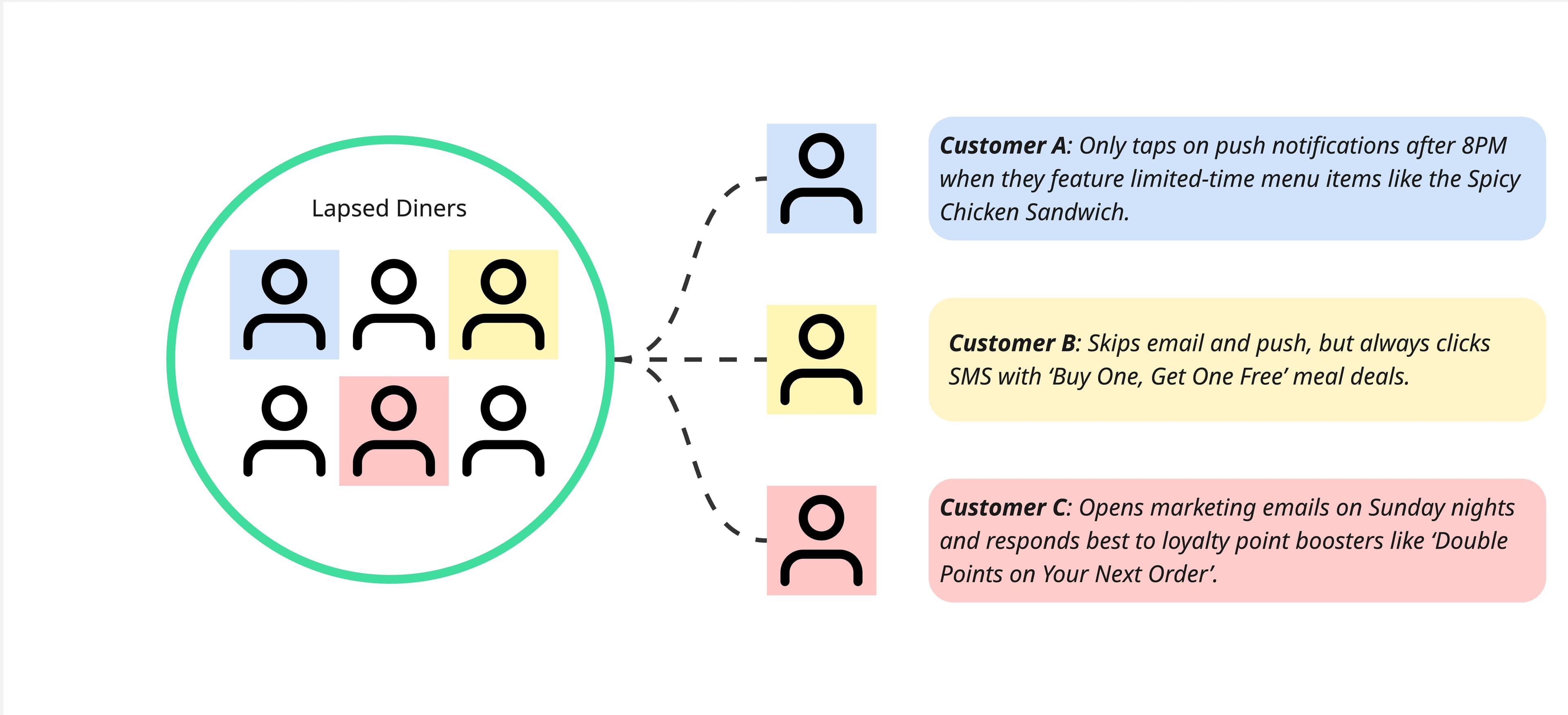
The reality is that every guest is unique. A loyalty app download doesn’t always signal an engaged customer, a missed order doesn’t always signal churn, breakfast buyers don’t behave the same as dinner diners, and routines shift all the time. Each guest has slightly different preferences, and each customer responds differently depending on the timing, creative, messaging, offer, etc.
QSR marketing teams aren’t struggling because they lack data, channels, or creativity. They’re hitting a wall because personalization at scale isn’t a messaging or content problem—it’s a decisioning problem. Every guest interaction requires a series of rapid, high-stakes decisions that traditional systems weren’t built to handle.
Traditional approaches like journeys, triggers, batch-and-blast calendar sends can help automate key campaigns, but they can’t adapt to individual guests in real-time. Eventually, no matter how much logic you build into your marketing programs or no matter how many traits and attributes you segment your audiences on, returns eventually begin to flatten, and brands inevitably hit a personalization ceiling, where more complexity, content, offers, and creative no longer drive better outcomes.
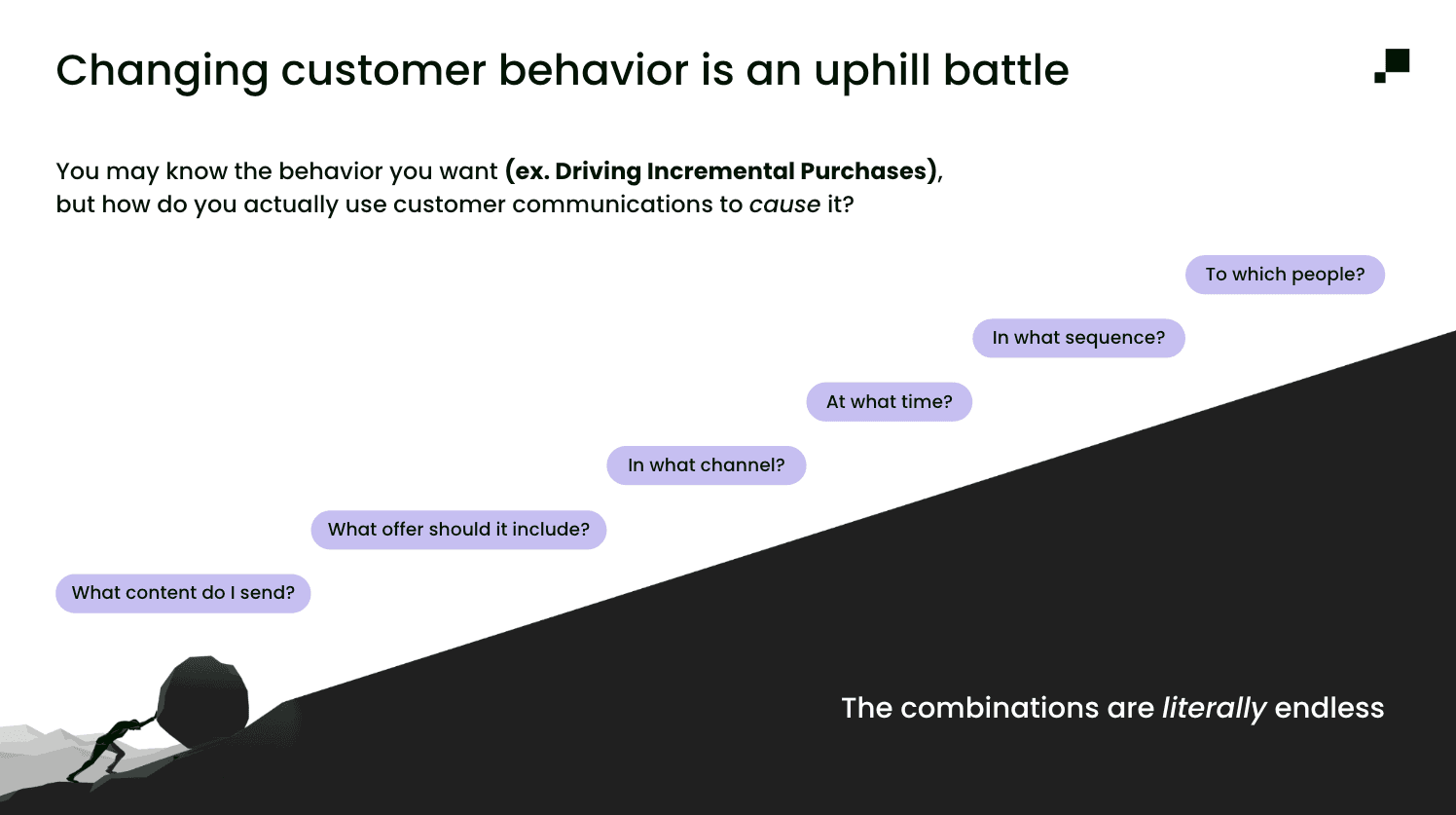
QSR marketers want to deliver true 1:1 experiences, but even the most advanced teams can only manage so many segments and journeys. Tailoring every touchpoint to each guest used to be impossible, until now.
Rewriting the Lifecycle Marketing Playbook with AI Decisioning
Discover how industry leaders are using AI to drive smarter, faster, and more profitable customer engagement.


Scaling 1:1 personalization with AI Decisioning
AI Decisioning platforms introduce a fundamentally new approach to marketing for QSR teams: one that is not based on journeys, segments, or batch-and-blast campaigns but 1:1 experience decisions made by AI agents.
Instead of manually defining journeys or managing batch and blast audiences, marketers build an AI agent. You define the outcomes you care about (repeat purchases, upsells, winbacks), provide creative and messaging options for the agent to select from, and set the guardrails that matter to your brand (discount usage, frequency caps, compliance).
From there, AI agents automatically make millions of experience decisions across your guest base, selecting the right message, offer, menu item, channel, and timing for each individual. Using reinforcement learning and contextual bandits, they continuously learn and optimize to drive more outcomes over time.
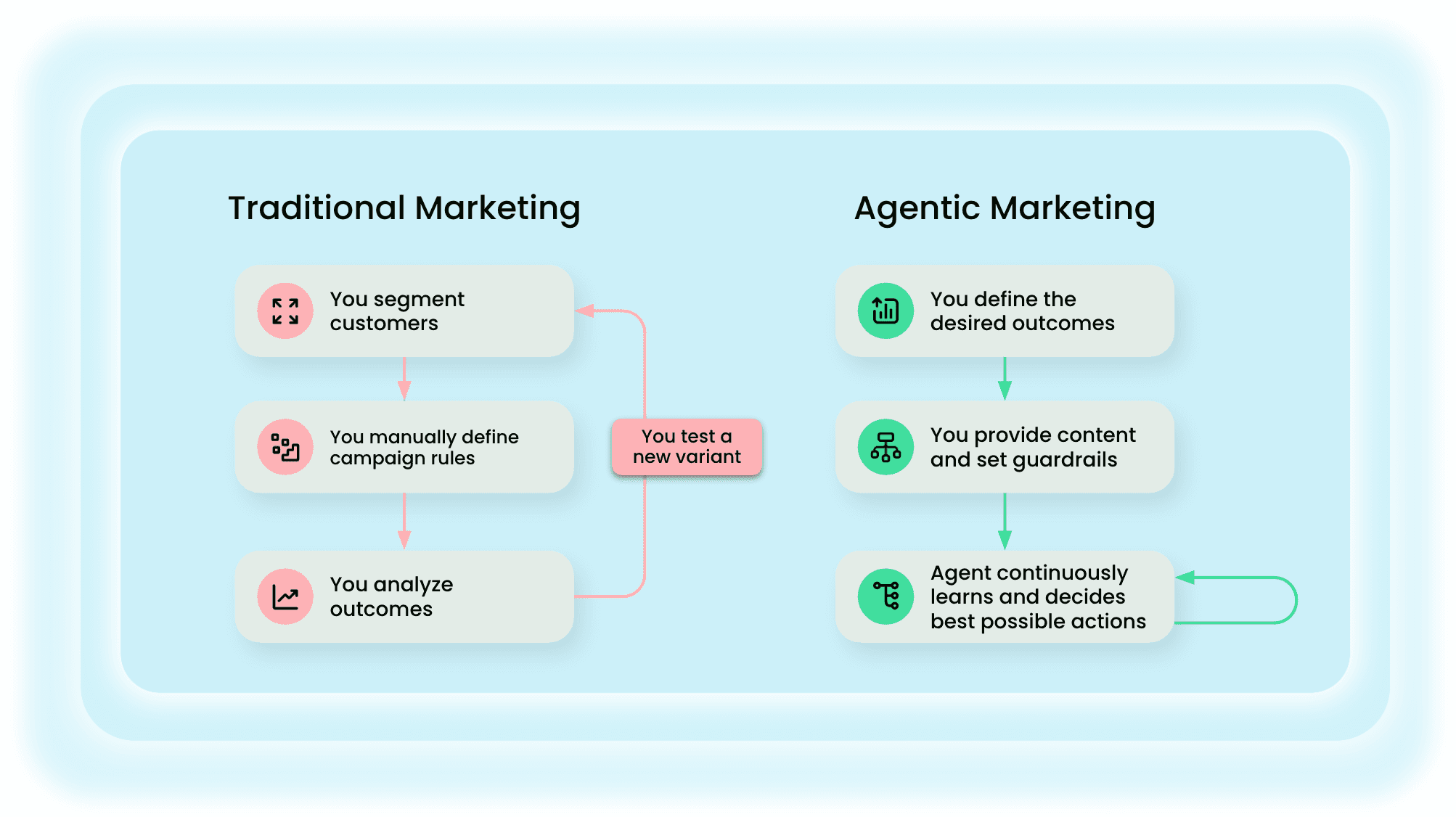
AI Decisioning unlocks outcome-based marketing
These agents go beyond human scale to answer questions like:
- Will this guest convert with a full-price message, or do they need a targeted discount to act?
- Is 8:30 AM the right time to send a lunch reminder, or do they typically convert closer to the afternoon?
- They downloaded the app last week. Do we prioritize a loyalty signup, a first-time offer, or an onboarding message?
- Which product or item should we promote? Something they’ve ordered before or something new that’s performing well with similar customers?
AI Decisioning is especially powerful in QSR because it thrives in fast-moving environments with clear goals, high volume, and lots of variation across customers, products, offers, and channels. For example, consider a fast casual restaurant with an average 200+ item menu, four major channels (push, SMS, email, in-app), dozens of regionally-targeted promos, and narrow send windows tied to breakfast, lunch, and dinner. No human team alone can optimize every possible experience combination, especially when there are so many uncontrollable variables that influence guest behavior.
AI agents solve it by automating the millions of decisions your team can’t make manually.
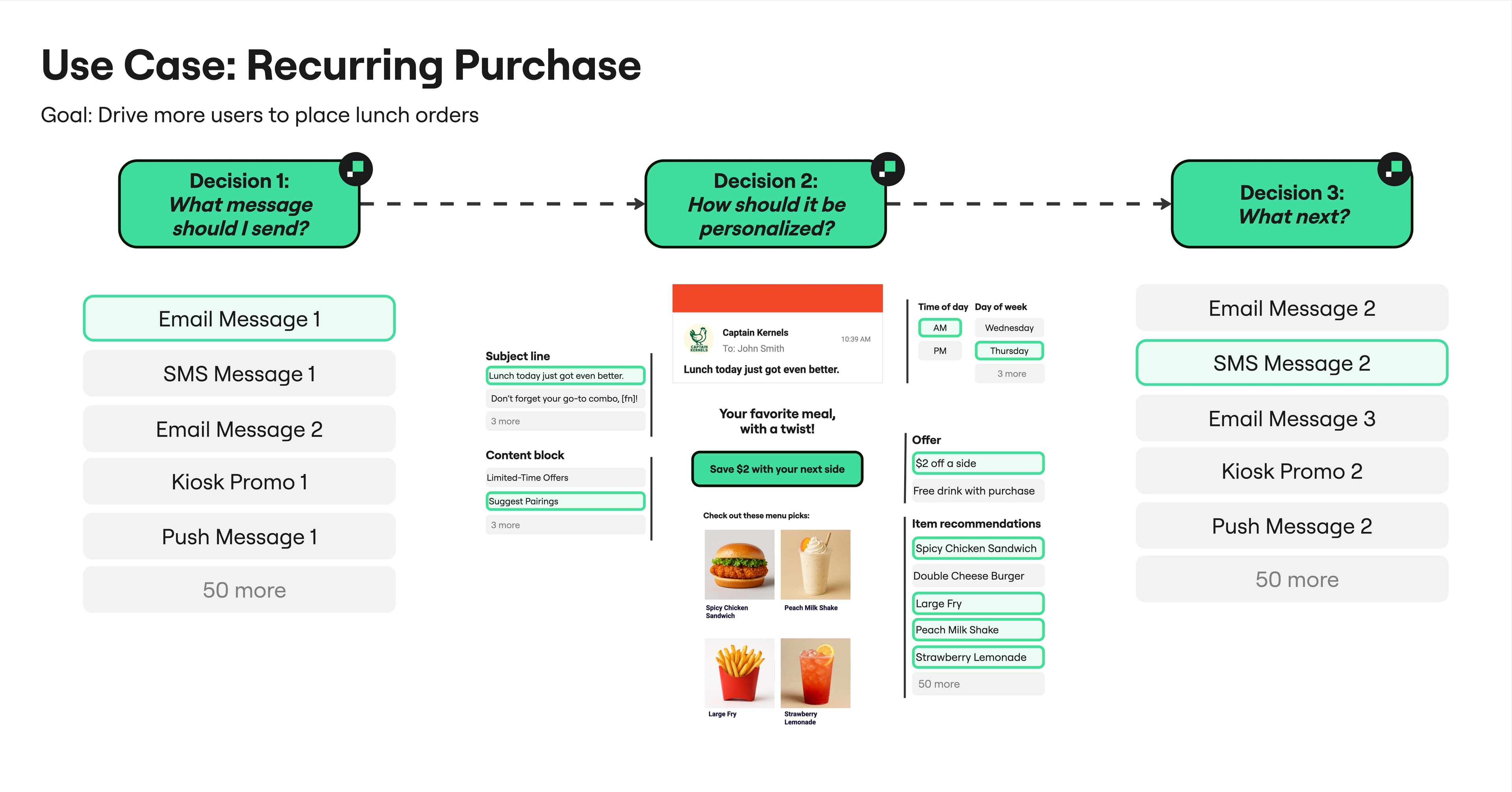
AI agents make the right decision at every step of the customer experience
And with Hightouch, getting started is simple. Our AI Decisioning platform connects directly to your existing customer data and plugs into every marketing channel you already use like email, push, SMS, in-app, and more.
You can move fast, experiment safely, and scale personalization across your entire lifecycle strategy without replatforming or disrupting your existing workflows.
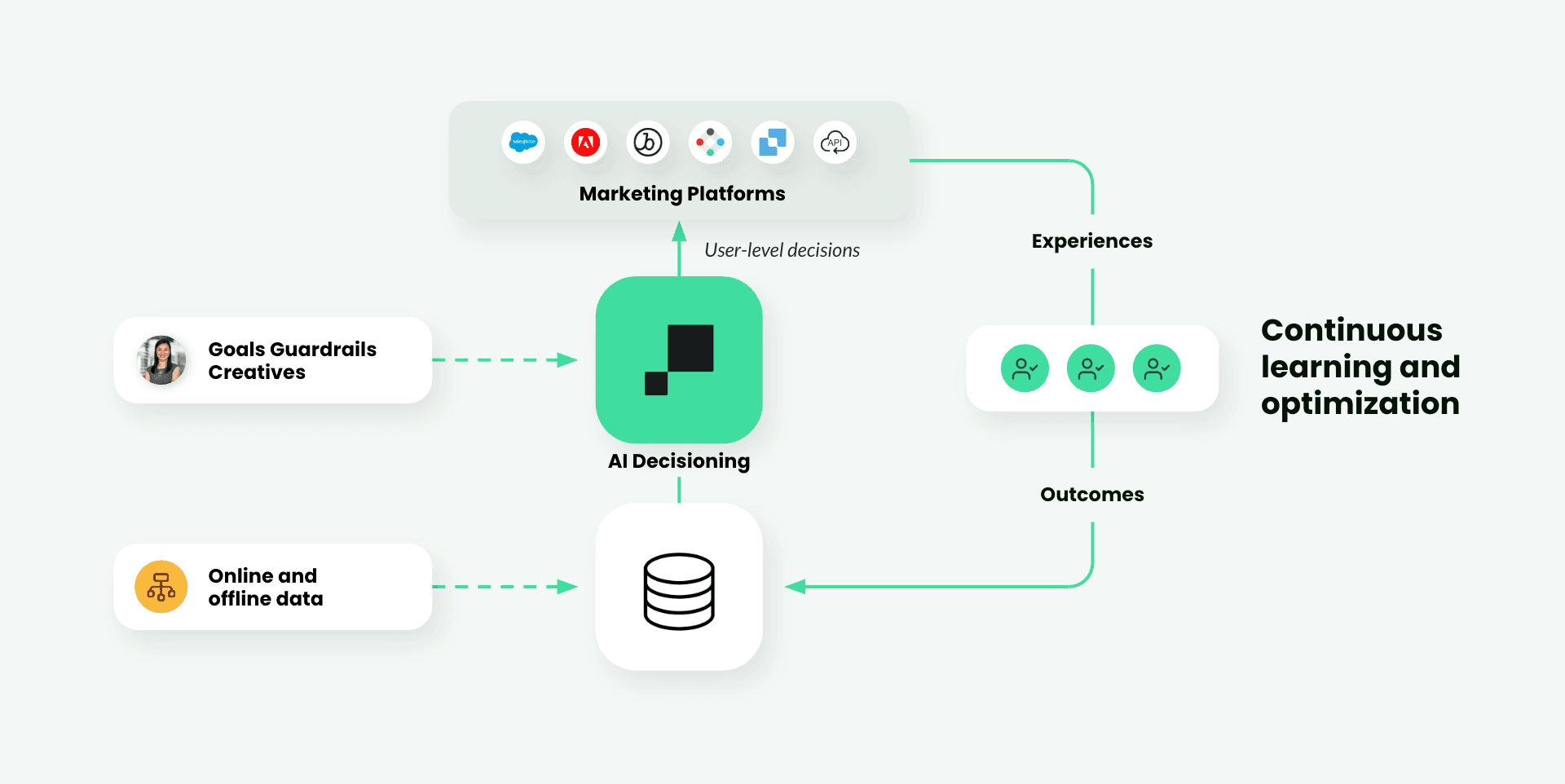
AI Decisioning plugs right into your existing tech stack
Use cases: How AI Decisioning is transforming QSR lifecycle teams
Here are a few examples of how AI Decisioning is transforming the way lifecycle teams approach core use cases in QSR.
Recurring purchases & order frequency
QSR brands live and die by order frequency, yet most still use generic cadences like “7 days since last order” or blast promos without accounting for individual habits, but these messages often arrive too early (causing fatigue) or too late (missing the moment).
AI Decisioning replaces fixed campaign cycles by learning each customer’s unique rhythm, channel, and preferences. Then, it triggers the optimal message to drive action.
Example: A guest orders every Wednesday at 7:00 PM. The AI agent reinforces that habit, but also experiments with Friday night nudges when similar guests tend to convert, unlocking a second weekly visit.
Cross-sell / upsell
Most QSR upsells, such as “Family meal” or “Upgrade to a combo,” are offered to everyone, regardless of user context. This one-size-fits-all approach often leads to low attachment rates and unnecessary discounts that hurt margins.
AI Decisioning personalizes every add-on offer based on each customer’s preferences, past purchases, and behavior, choosing the right product, message, and delivery moment to increase attach rate without eroding margin.
Example: A customer never orders sides and opens emails at night. The agent learns this, sends an 8:15 PM “VIP lunch pairing” email, and skips discounts in favor of exclusivity.
Winback & re-engagement
QSRs miss out on potential customers every week due to broken routines, missed engagement opportunities, or better offers elsewhere. Traditional re-engagement tactics like generic “We miss you” discounts don’t account for the customer’s prior patterns or preferences.
AI Decisioning identifies purchase behavior changes and adapts the recovery strategy for each user, deciding if, when, and how to re-engage based on past responsiveness, purchase history, and margin considerations.
Example: A customer orders dinner for two via the app every other Saturday. The agent sees they’ve lapsed, notes push was ignored, and sends a 4:45 pm SMS with one-tap reorder.
Uncovering guest and creative insights
The true value of AI Decisioning isn’t just in the scale of decisioning and outcomes, but also in the insights the system uncovers. As the agents continuously experiment with content, timing, and channels, they discover new insights that a human team may have never thought to look for.
For QSRs, this might mean discovering that guests who skip one week of orders typically return if nudged with an app notification, not a discount. Or that dinner buyers who click on lunch promos tend to convert three days later if the message includes their go-to item. Marketers can then take these learnings and roll them into future campaigns to inform creative and messaging, and offer choices for agents to refine and optimize future campaigns.
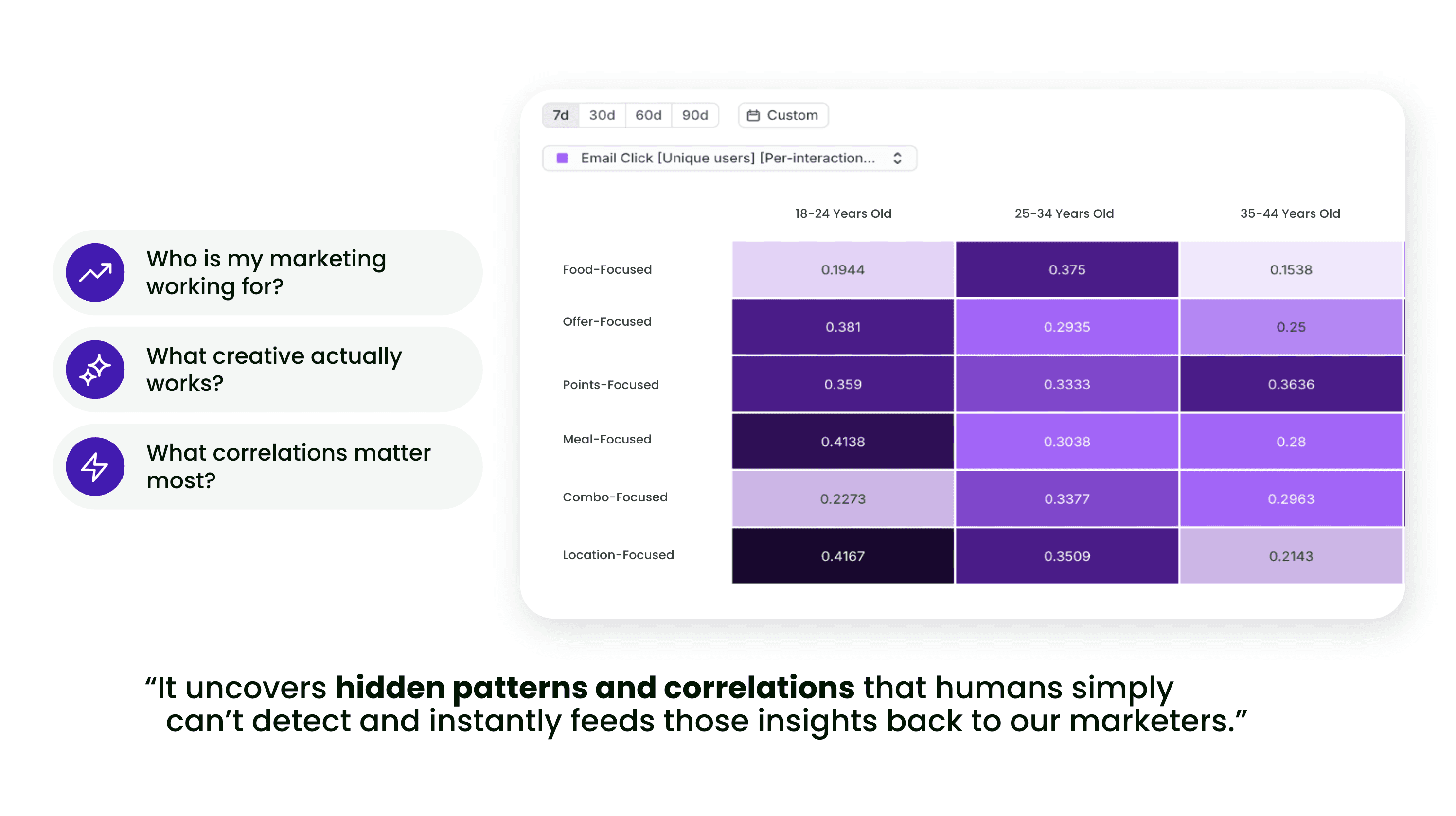
Closing thoughts
QSR marketers don’t need more channels, rules, or experiments; they need a system that makes better decisions, learns, and continuously improves with every send and every customer interaction across every channel.
In an industry where customers have endless choices and every brand is competing for their attention, the way you use AI to truly personalize becomes your biggest competitive edge.
If you are looking to drive more repeat orders, faster experimentation, and smarter marketing at scale, we’d love to show you how.
Book some time with our team today






